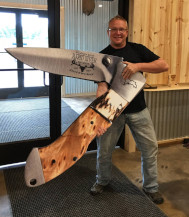|









































|
| | |
|
The Art of Fish Filleting: A Comprehensive Guide
Filleting a fish is a fundamental skill for any culinary enthusiast. It involves removing the flesh from the bones in a way that maximizes yield and presents the fish beautifully. This guide will walk you through the essentials of fish filleting, from the tools needed to the techniques used, along with useful tips to enhance your skills.
Essential Tools for Fish Filleting
- Fillet Knife: A specialized knife with a thin, flexible blade is crucial for precise cuts.
- Boning Knife: For more intricate work like removing bones.
- Cutting Board: A large, sturdy board provides a stable surface.
- Fish Scalers: If you're working with a fish that has scales.
- Kitchen Shears: Helpful for cutting fins or small bones.
- Gloves: To protect your hands and provide a better grip.
Step-by-Step Guide to Filleting a Fish
-
Prepare Your Workstation:
- Ensure your tools are clean and sharp.
- Lay the fish on a clean, dry cutting board.
-
Scaling and Cleaning:
- If your fish has scales, remove them by scraping from the tail to the head under running water.
- Gut the fish if it hasn't been done already.
-
First Cut:
- Make an incision behind the gills and pectoral fin, slicing down to the backbone.
-
Separate the Fillet:
- Gently insert the knife at the first incision and slide it along the backbone towards the tail. Keep the blade as close to the bones as possible to maximize the meat yield.
-
Skinning (if desired):
- If you prefer skinless fillets, start at the tail end and slide the knife between the skin and flesh.
-
Remove Bones:
- Use the boning knife or tweezers to remove any remaining bones.
Tips for Perfect Fillets
- Sharp Knife: Always keep your fillet and boning knives sharp. A dull knife can ruin the fillet's texture and make the job harder.
- Gentle Handling: Fish flesh can be delicate. Handle it gently to maintain its integrity.
- Practice: Filleting is a skill that improves with practice. Start with larger, easier-to-handle fish.
Common Mistakes to Avoid
- Rushing the Process: Take your time, especially when making initial cuts.
- Not Removing All Bones: Ensure all pin bones are removed for a pleasant eating experience.
- Tearing the Flesh: Use smooth, controlled strokes to avoid tearing the flesh.
Cleaning and Storage
After filleting, it's important to clean your workspace, tools, and fillets properly. Store the fillets in a refrigerator if you plan to use them soon, or freeze them for long-term storage.
Conclusion
Mastering the art of fish filleting can enhance your culinary skills significantly. With the right tools and techniques, you can prepare beautiful, boneless fish fillets that are ready for cooking. Remember, patience and practice are key to perfecting this skill.
This guide provides a thorough overview of how to fillet a fish, offering practical advice for both beginners and seasoned cooks. By following these steps and tips, you can confidently prepare fish fillets for a variety of dishes.
| |
| | |
|




That is one big knife!



|
|